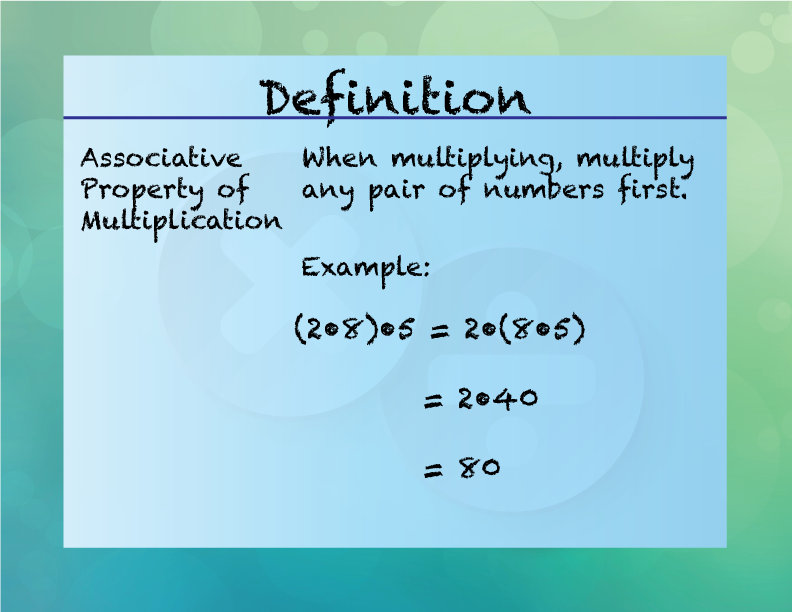
Display Title
Elementary Definition--Multiplication and Division Concepts--Associative Property
Display Title
Associative Property

Topic
Multiplication and Division
Definition
The associative property states that the way in which numbers are grouped does not change their sum or product.
Description
The associative property is a key concept in mathematics, particularly in operations like addition and multiplication. It states that the grouping of numbers does not affect the result. For example, in multiplication, (2 × 3) × 4 is the same as 2 × (3 × 4). This property simplifies complex calculations and helps in understanding the structure of algebraic expressions. In real-world scenarios, the associative property is used in computer algorithms to optimize calculations and in financial calculations to simplify the grouping of transactions. Understanding this property allows students to approach problems more flexibly and develop a deeper comprehension of mathematical operations.
Teacher script: "Suppose you are multiplying these three numbers: 2, 3, 5. Do you get a different result if you multiply 2 and 3 first and then 5 or if you multiply 3 and 5, and then be 2?"
For a complete collection of terms related to Multiplication and Division click on this link: Multiplication and Division Collection
| Common Core Standards | CCSS.MATH.CONTENT.4.OA.B.4, CCSS.MATH.CONTENT.3.OA.C.7, CCSS.MATH.CONTENT.3.OA.B.5 |
|---|---|
| Grade Range | 2 - 4 |
| Curriculum Nodes |
Arithmetic • Multiplication • Multiplication Expressions and Equations |
| Copyright Year | 2021 |
| Keywords | multiplication, division, equation |